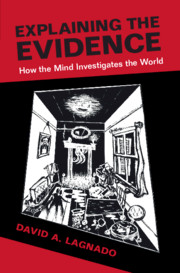Book contents
- Explaining the Evidence
- Explaining the Evidence
- Copyright page
- Dedication
- Contents
- Figures
- Tables
- Preface
- Acknowledgements
- Chapter 1 The Cliff Death
- Chapter 2 Models in Mind
- Chapter 3 Causal Modelling
- Chapter 4 Thinking beyond Biases
- Chapter 5 Expert Reasoning in Crime Investigation
- Chapter 6 Questions of Evidence
- Chapter 7 Competing Causes
- Chapter 8 Confirmation Bias
- Chapter 9 Telling Stories
- Chapter 10 Idioms for Legal Reasoning
- Chapter 11 Causal Reasoning in a Time of Crisis
- References
- Index
Chapter 1 - The Cliff Death
Published online by Cambridge University Press: 20 October 2021
- Explaining the Evidence
- Explaining the Evidence
- Copyright page
- Dedication
- Contents
- Figures
- Tables
- Preface
- Acknowledgements
- Chapter 1 The Cliff Death
- Chapter 2 Models in Mind
- Chapter 3 Causal Modelling
- Chapter 4 Thinking beyond Biases
- Chapter 5 Expert Reasoning in Crime Investigation
- Chapter 6 Questions of Evidence
- Chapter 7 Competing Causes
- Chapter 8 Confirmation Bias
- Chapter 9 Telling Stories
- Chapter 10 Idioms for Legal Reasoning
- Chapter 11 Causal Reasoning in a Time of Crisis
- References
- Index
Summary
Chapter 1 introduces the main questions to be tackled in the book, tracing a crime case from the discovery of a body to the verdict of a court. How do we generate initial hypotheses from sparse information? How do we develop our hypotheses as we gather new evidence? How do we make sense of a large body of conflicting evidence to reach a final decision? The crime case highlights the challenges we face: to explain what actually happened – the web of cause and effects that led to the death – but also to evaluate the evidence, assessing the many reports, claims and counterclaims. I argue that our minds are better prepared for explaining than evaluating.
Keywords
- Type
- Chapter
- Information
- Explaining the EvidenceHow the Mind Investigates the World, pp. 1 - 13Publisher: Cambridge University PressPrint publication year: 2021

